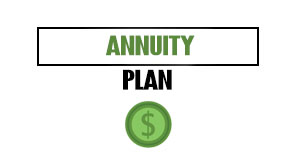Most people dream of a comfortable retirement. If so, your 401(k) can be your secret weapon. While the median 401(k) balance saw a significant jump in 2023, reaching $35,286, according to Vanguard, many Americans still face a significant savings gap. A Northwestern Mutual survey, however, reveals that Americans estimate needing a whopping $1.46 million for a comfortable retirement, highlighting the importance of maximizing your 401(k) contributions.
Whether you’re just starting your career, in the thick of it, or nearing retirement, optimizing your 401(k) is crucial. This post will provide actionable tips tailored to each stage of your career, helping you bridge that retirement savings gap and achieve your financial goals.
Table of Contents
ToggleEarly Career: Laying the Foundation
During the early stages of your career, time is your greatest asset. As such, here are some tips for making the most of it:
- Start contributing early. As soon as you start contributing to your 401(k), your money has more time to compound. Over decades, even small contributions can add up.
- Take advantage of the employer match. Many employers offer matching contributions, usually up to a certain percentage of your salary. You don’t want to leave free money on the table by not taking advantage of this. If possible, try contributing as much as possible to qualify for the full match. Employers will be required to enroll eligible employees in 401(k) and 403(b) retirement plans automatically starting January 1, 2025. In other words, employees will be automatically enrolled in the plan unless they opt-out. Further, employers must select a contribution rate between 3% and 10% of the employee’s salary. Depending on employee preference, this contribution rate can be adjusted.
- Choose investments wisely. It’s okay to take more risks at this point in your career. To grow your investment portfolio over time, you may want to allocate more money to stocks or equity funds.
- Increase contributions gradually. Even if you can’t contribute the maximum amount immediately, increase your contributions by 1-2% annually or as soon as you receive a raise.
Mid-Career: Building Momentum
As you enter your mid-career years, you may earn more. At the same time, you may have competing financial obligations like mortgages or education expenses for your children. However, you can stay on track by following these steps;
- Maximize contributions. You should aim to contribute the maximum amount to your 401(k) as your income grows. For individuals under age 50, this limit is $23,500 in 2024.
- Rebalance your portfolio. The closer you get to retirement, the more you should adapt your investment strategy. Review your asset allocation annually to ensure your retirement portfolio is aligned with your financial goals and risk tolerance.
- Avoid early withdrawals. You will incur penalties and disrupt the growth of your savings if you withdraw from your 401(k) before age 59 ½. Investing in an emergency fund is another option for financial emergencies.
- Consider catch-up contributions. As of 2024, you can make catch-up contributions if you’re 50 or older, which allows you to contribute an additional $7,500 annually. Additionally, employees who are 60-63 at any time during the tax year can contribute up to $11,250. You can catch up to $100,000 or 150% of your regular catch-up cap.
- Review fees. Over time, high fees can erode your savings. To minimize your fees, check your plan’s expense ratios and consider low-cost index funds or ETFs.
Late Career: Preparing for Retirement
As retirement approaches, you should focus on preserving your savings and planning for withdrawals. Here’s how you can prepare for this stage;
- Shift to conservative investments. Protect your savings by reducing your investment exposure to high-risk investments. Instead, invest in low-risk bonds, stable-value funds, or other options with low market volatility.
- Develop a withdrawal strategy. Make a plan for how you will withdraw funds in retirement and what tax consequences you will face. Once you reach the age of 73, you must begin withdrawing from your traditional IRA, SEP IRA, SIMPLE IRA, and retirement plan accounts.
- Estimate retirement expenses. Expenses for healthcare, housing, leisure, and travel in retirement must be calculated. Using this information, you can determine whether your savings will be sufficient.
- Consider a financial advisor. With the help of a professional, you can improve your strategy, optimize your taxes, and ensure your portfolio is well-positioned for retirement.
Universal Tips for Maximizing Your 401(k)
No matter where you are in your career, these strategies can help you maximize your 401(k);
- Understand your plan. You should familiarize yourself with the features of your 401(k) plan, including employer match policies, investment options, and fees.
- Automate contributions. By setting up automatic contributions, you can ensure consistency and eliminate the temptation to spend instead of save.
- Stay informed. Keeping updated with changes in contribution limits, tax laws, and market trends will allow you to make more informed decisions.
- Diversify your investments. Don’t put all your eggs in one basket. In addition to reducing risk, a diversified portfolio increases long-term returns.
- Monitor progress. You should review your account regularly to track your progress toward your retirement goals and adjust as needed.
Conclusion
You must take a proactive approach to maximize your 401(k) based on your career stage. Investing early, staying consistent, and adapting your strategy as you age can help you build a substantial retirement nest egg. Discipline, knowledge, and taking advantage of all resources are essential to succeed.
FAQs
What is the best way to maximize my 401(k) contributions?
- Understand your employer match. This is free money! Therefore, you should contribute enough to get the full employer match.
- Increase contributions gradually. You can gradually increase your contribution percentage by starting with a comfortable amount and gradually increasing it over time.
- Consider automatic increases. Many plans allow you to schedule automatic increases to your contributions, making saving consistently easier.
- Max out your contributions if possible. Whenever possible, try to contribute the maximum amount permitted by the IRS.
How do I choose the right investments for my 401(k)?
- Consider your risk tolerance. Do you feel comfortable with the possibility of market fluctuations?
- Diversify your investments. Be careful not to put all your eggs in one basket. Instead, your money should be invested across multiple asset classes, such as stocks, bonds, etc.
- Consider a target-date fund. As you approach retirement, these funds automatically adjust their asset allocation.
- Review your investments regularly. You should rebalance your portfolio periodically to maintain your desired asset allocation.
When should I start withdrawing from my 401(k)?
- Plan for a sustainable withdrawal rate. It is generally recommended to withdraw around 4% of your assets annually.
- Consider your other sources of income. Savings from Social Security, annuities, and other sources can supplement your 401(k) withdrawals.
- Consult with a financial advisor. Your financial advisor can assist you in creating a customized retirement income plan.
What are the tax implications of withdrawing from my 401(k)?
- Traditional 401(k)s. Withdrawals are usually taxed as ordinary income.
- Roth 401(k)s. Withdrawals from qualified Roth 401(k)s are tax-free.
- Early withdrawals. An additional 10% penalty may apply in addition to taxes.
What happens to my 401(k) when I leave my job?
- It may be possible for you to keep your 401(k) in your employer’s plan.
- Your 401(k) can be rolled over to an IRA.
- Though you may be able to cash out your 401(k), it’s usually not recommended because you may be subject to taxes and fees.
Image Credit: Towfiqu barbhuiya; Pexels

















